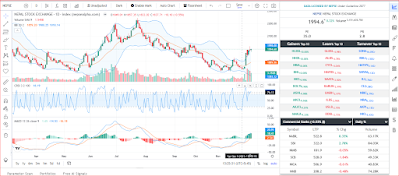OPEN-ENDED MUTUAL FUND. What is open-ended mutual fund?
An open-ended mutual fund is a type of investment fund that issues and redeems shares on a continuous basis, meaning investors can buy or sell shares at any time. These funds do not have a fixed number of shares, and their capitalization can increase or decrease as investors enter or exit the fund. Open-ended mutual funds are managed by investment companies or fund managers, who make decisions on how to invest the fund's assets based on its stated investment objectives.
Key features of open-ended mutual funds include:
1. Liquidity: Investors can buy or sell shares of the fund on any business day at the net asset value (NAV) price, which is calculated at the end of each trading day.
2. Continuous Buying and Selling: The fund can issue an unlimited number of shares to meet investor demand. Conversely, it can buy back shares from investors who wish to sell.
3. Professional Management: The fund is managed by professional portfolio managers who make investment decisions based on the fund's objectives. Investors benefit from the expertise of these professionals.
4. Diversification: Open-ended mutual funds typically invest in a diversified portfolio of securities, which helps spread risk across different assets.
5. NAV (Net Asset Value): The price per share of an open-ended mutual fund is calculated based on the fund's total assets minus liabilities, divided by the number of outstanding shares. This is known as the NAV, and it represents the per-share value of the fund.
Open-ended mutual funds are commonly used by individual investors as a way to access a diversified portfolio without the need for significant capital. They are suitable for investors who prefer liquidity and flexibility in managing their investments. Investors can choose from a variety of fund types, including equity funds, bond funds, balanced funds, and more, based on their financial goals and risk tolerance.
What is raster and vector ?/Raster and Vector/Raster and Vector k ho ?
Raster and vector graphics are two different types of digital images, and they differ in how they represent and store visual information.
Photoshop Raster based
illustrator Vector based
Raster Graphics:
1. Representation: Raster graphics, also known as bitmap
graphics, is made up of a grid of pixels (tiny dots of color).
2. Resolution: The quality of a raster image is
determined by its resolution, which is the number of pixels per inch (PPI) or
dots per inch (DPI). Higher resolution generally means better image quality.
3. Scalability: Raster images can lose quality when
resized because increasing their size means stretching the existing pixels,
which can result in a loss of clarity and sharpness.
4. File Formats: Common raster graphic formats include
JPEG, PNG, GIF, and BMP.
Vector Graphics:
1. Representation: Vector graphics use mathematical
equations to create shapes such as lines, circles, and polygons. Instead of
pixels, they comprise paths defined by points, lines, and curves.
2. Resolution: Vector graphics are
resolution-independent, meaning they can be scaled to any size without loss of
quality. This makes them ideal for logos and other designs that need to be resized
frequently.
3. Scalability: Vector graphics are highly scalable, and
they maintain their sharpness and clarity regardless of the size at which they
are displayed.
4. File Formats: Common vector graphic formats include
SVG (Scalable Vector Graphics), AI (Adobe Illustrator), and EPS (Encapsulated
PostScript).
Use Cases:
Raster Graphics: Best suited for photographs, complex
images, and detailed graphics where subtle color variations are important.
-Vector Graphics: Ideal for logos, icons, illustrations, and
designs that require scalability without loss of quality.
In summary, the main difference lies in the way
images are constructed and represented. Raster graphics use pixels and are
resolution-dependent, while vector graphics use mathematical equations and are
resolution-independent, making them more versatile for certain types of design
work.

.png)
























